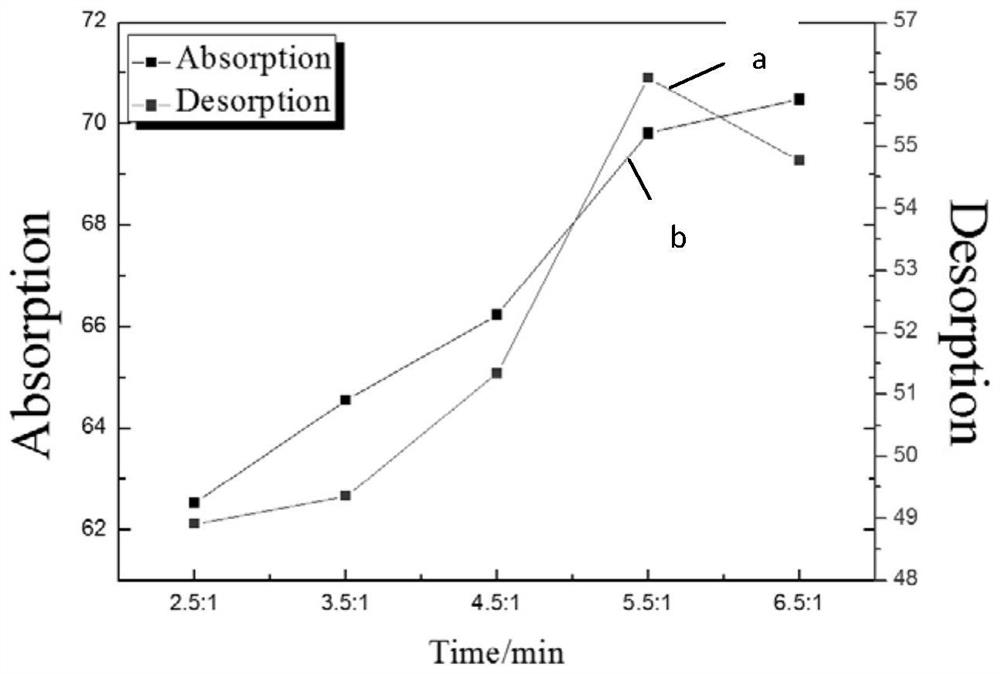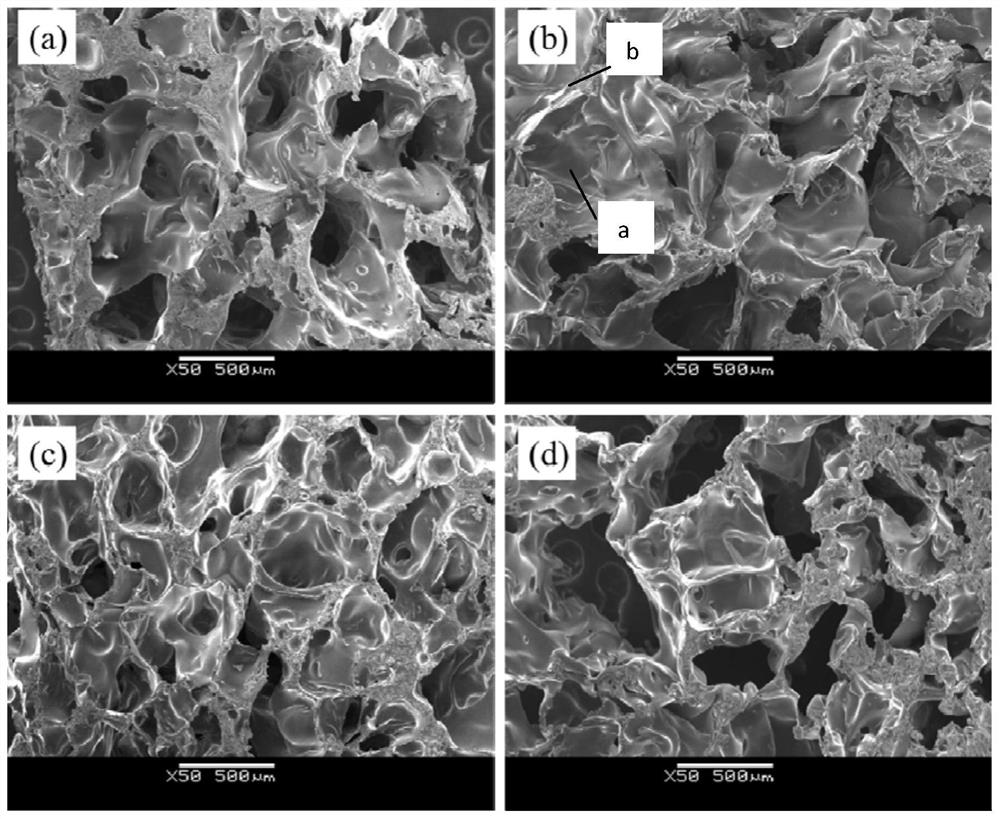Starch-based foam cushioning material and packaging material
A cushioning material, starch-based technology, applied in the field of foaming materials, to achieve the effects of small cushioning coefficient, high platform stress, and excellent cushioning and energy-absorbing functions
- Summary
- Abstract
- Description
- Claims
- Application Information
AI Technical Summary
Problems solved by technology
Method used
Image
Examples
Embodiment 1
[0039] 1) Prepare the first composite humidity control material, namely acrylic acid-sodium acrylate-acrylamide solution:
[0040]Use 12g of water to prepare 6.8g of NaOH into a solution. Under a cold water bath and electromagnetic stirring, use a dropper to slowly add the prepared NaOH solution to 13.5g of acrylic acid (AA), and then follow (acrylic acid + sodium acrylate): Acrylamide (AM)=32.3g:9.6g mass ratio Weigh a certain amount of acrylamide and add it to the above-mentioned acrylic acid (sodium) solution, and keep stirring until AM is completely dissolved. Wherein, acrylic acid+sodium acrylate refers to a mixed solution obtained by dropping NaOH solution.
[0041] 2) Prepare the second composite humidity-conditioning material, that is, the starch-based composite humidity-conditioning material:
[0042] Weigh 6g of cornstarch, add it to the above mixed solution, stir and mix evenly, and gelatinize for 40min in a water bath with a temperature of 68°C and a speed of 410r...
Embodiment 2
[0046] 1) Prepare the first composite humidity control material, namely acrylic acid-sodium acrylate-acrylamide solution:
[0047] Use 9.2g of water to prepare 4.4g of NaOH into a solution. Under cold water bath and electromagnetic stirring, slowly drop the prepared NaOH solution into 11.6g of acrylic acid (AA) with a dropper. : Mass ratio of acrylamide (AM)=25.2g:4.8g Weigh quantitative acrylamide and add it into the above-mentioned acrylic acid (sodium) solution, and keep stirring until AM is completely dissolved. Wherein, acrylic acid+sodium acrylate refers to a mixed solution obtained by dropping NaOH solution.
[0048] 2) Prepare the second composite humidity-conditioning material, that is, the starch-based composite humidity-conditioning material:
[0049] Weigh 2.4g of cornstarch, add it to the above mixed solution, stir and mix evenly, gelatinize in a water bath with a temperature of 62°C and a speed of 490r / min for 26min; after taking it out to room temperature, add ...
Embodiment 3
[0053] 1) Prepare the first composite humidity control material, namely acrylic acid-sodium acrylate-acrylamide solution:
[0054] Use 11.2g of water to prepare 6g of NaOH into a solution. Under a cold water bath and electromagnetic stirring, use a dropper to slowly drop the prepared NaOH solution into 12.8g of acrylic acid (AA), and then follow (acrylic acid + sodium acrylate): Acrylamide (AM)=30g:8g mass ratio Weigh a certain amount of acrylamide and add it to the above-mentioned acrylic acid (sodium) solution, and keep stirring until AM is completely dissolved. Wherein, acrylic acid+sodium acrylate refers to a mixed solution obtained by dropping NaOH solution.
[0055] 2) Prepare the second composite humidity-conditioning material, that is, the starch-based composite humidity-conditioning material:
[0056] Weigh 4.5g of corn starch, add it to the above mixed solution, stir and mix evenly, gelatinize in a water bath with a temperature of 66°C and a speed of 460r / min for 28...
PUM
| Property | Measurement | Unit |
|---|---|---|
| yield stress | aaaaa | aaaaa |
Abstract
Description
Claims
Application Information
 Login to View More
Login to View More - R&D
- Intellectual Property
- Life Sciences
- Materials
- Tech Scout
- Unparalleled Data Quality
- Higher Quality Content
- 60% Fewer Hallucinations
Browse by: Latest US Patents, China's latest patents, Technical Efficacy Thesaurus, Application Domain, Technology Topic, Popular Technical Reports.
© 2025 PatSnap. All rights reserved.Legal|Privacy policy|Modern Slavery Act Transparency Statement|Sitemap|About US| Contact US: help@patsnap.com



